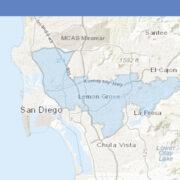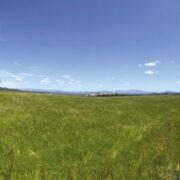“ Our understanding of God speaks of a low Christology: the God of the Scriptures, the God who became human like us, and the God who entered our broken human condition.”
FOUR and a half centuries – that’s how long the Filipino people have venerated the image of Santo Niño de Cebu.
It’s one of most popular religious devotion in the Philippines, second to Simbang Gabi Masses.
The devotion started during the second Spanish Expedition to the Philippines in 1565. While surveying the debris of the village in Cebu where they landed, the Spanish soldiers headed by Miguel Legaspi found an image of the Child Jesus under a pile of ashes, unscratched and unburned, inside a wooden box. Later on, they learned that this image of the Child Jesus was the gift of Magellan, the leader of the first Spanish Expedition to the Philippines in 1521, to the queen of the island, Juana, on the day of her Christian baptism.
From then, Filipinos have venerated this image of the Holy Child and called it the miraculous Santo Niño. Its devotion spread throughout the Philippines and the world. The Holy See gave permission to celebrate his feast day on the Third Sunday of Ordinary Time.
The original image is enshrined in the Basilica of Santo Niño in Cebu, where the annual International Eucharistic Congress was held last week.
Every year, millions of pilgrims come to Cebu to join in the celebration of his feast day with Novena prayers and a Pontifical Mass, followed by a festive procession and dances called “Sinulog” along the streets of Cebu.
What is so amazing is that this image is ubiquitous – almost every home, restaurant, mall, office and even Jeepneys (the popular local transportation) has this image. Not only do the Filipino people venerate the Santo Nino, they also dress him up in different ways.
So you see Santo Niño dressed up as a farmer, a fisherman, a doctor, a teacher or even a basketball player with a Lakers t-shirt.
You might say that this veneration has gone too far. But I believe that there is something deeper in seeing this Filipino piety and devotion. It speaks of our pious faith as Filipino Catholic Christians and our understanding of God.
You see, for us Filipinos, God is everywhere. He is part of our lives and our world. He is never out there in a distant place. God is very much part of our everyday lives.
Our understanding of God speaks of a low Christology: the God of the Scriptures, the God who became human like us, and the God who entered our broken human condition.
He is the God of history, as Edward Schillebeeckx contends; he is involved in the history of our lives.
He is very much a part of our being and our ordinary existence, as Karl Rahner would convey. He is immanent and transcendent. He is the ground of our being.
He is God who is the hope and consolation of the poor, the captives, the blind, and the oppressed. So we dress him up as a poor fisherman, a laborer or a student.
For us Filipinos then, God is so much accessible. He is not a tyrant or an arrogant God. He is God-child. To him, we can unburden all our hardships, insecurities and fears. To him, we can come to relieve our pains and to find comfort and joy in his presence.
There is so much to learn from Filipinos’ understanding of God. Many of us, sometimes, come with sophisticated theology or spirituality. A lot of times in our life, what we need is the simplicity of faith – a childlike faith that is free, humble, totally dependent on the Father, and entrusting to God’s will.
This is the spirituality that evangelizes, that reaches out and converts people to Christ.
It’s much like the experience of St. Edith Stein, the Jewish German philosopher and scholar who converted to Catholicism after her experience of the ordinary piety of Catholic people during her times. It was not his scholarly works that finally converted her. It was her experience of seeing folks expressed their faith with so much devotion – like the experience she had when she entered the Frankfurt Cathedral and was impressed by the faith of a woman kneeling inside the church, praying with so much devotion.
“To the synagogues or to the Protestant churches which I had visited,” she wrote, one went only for services.” “Here was someone interrupting her everyday shopping errands to come into this church, although no other person was in it, as though she were here for an intimate conversation. I could never forget that.”
So, let us as meet the Child-God with meekness, devotion, and simplicity of faith. Let us learn from the spirituality and religiosity of the Filipino people: a spirituality that sees God as an intimate part our daily lives, a God who is involved in human history, a God who became one like us!
(A homily delivered to the seminarians and guests of St. John’s Seminary on the Feast of Santo Niño, January 24, 2016)
* * *
From a Filipino immigrant family, Reverend Rodel G. Balagtas was ordained to the priesthood from St. John’s Seminary in 1991. He served as Associate Pastor at St. Augustine, Culver City (1991-1993); St. Martha, Valinda (1993-1999); and St. Joseph the Worker, Canoga Park (1999-2001). In 2001, he served as Administrator Pro Tem of St. John Neumann in Santa Maria, CA, until his appointment as pastor of Immaculate Heart of Mary, Los Angeles, in 2002, which lasted 12 years. His term as Associate Director of Pastoral Field Education at St. John’s Seminary began in July 2014.




